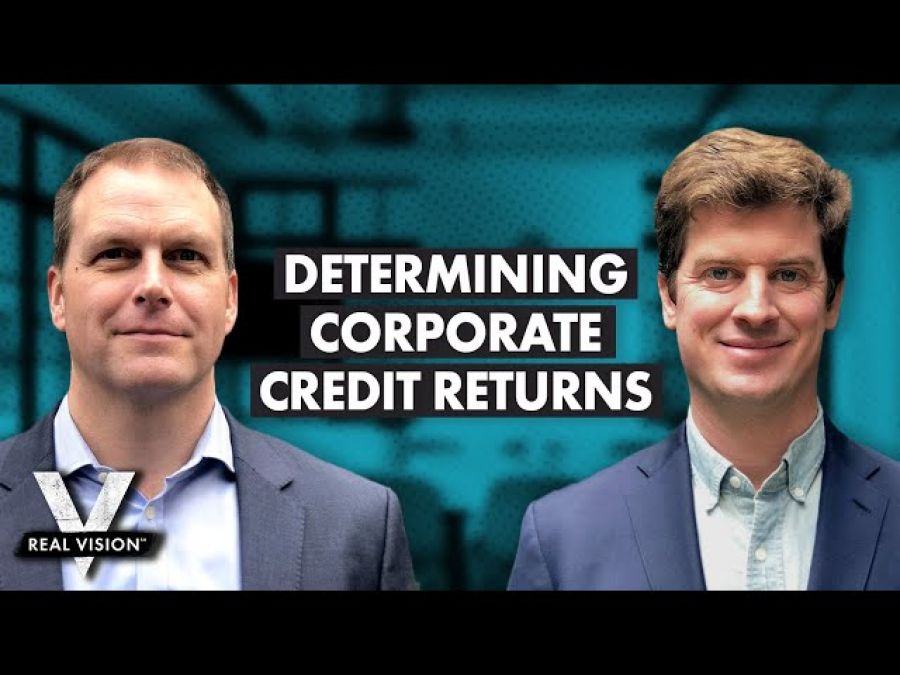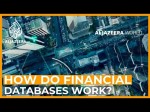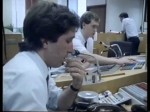Video Transcription:
How Companies Determine Corporate Credit Rate (w/ Dan Rasmussen & Greg Obenshain)
DAN RASMUSSEN: How does that compare to credit? Is what Fama and French found in stocks, does that map directly on to credit? Should I go buy the smallest, highest yielding bond issues? What has your research found generally? And then after that, I'd like to shift to saying, hey, what's different in a crisis? But in a normal market, what have you seen that'd be the big factors that predict corporate credit returns? GREG OBENSHAIN: Yes. When you think about corporate credit, you need to understand that the easiest thing to do would just be-- if you put yield in as a factor, it's going to be highly significant, right? And you'd say, okay, I should just buy the highest yielding thing. And you very quickly find out that that's a bad, bad idea. And the reason is that the market's relatively efficient at pricing things on a relative value basis. If this bond yields 8 and this bond yields 7, most of the time there's a really good reason why. DAN RASMUSSEN: So, in some sense, you're arguing form market efficiency, right-- that no matter what the yield is, the yield should deliver the same return. it should be at that Fool's Yield level between BB and B, right? It's just a flat line. Okay, you can tell me that the yield is this, but if markets are efficient, you're just not going to get anything-- there's a maximum you can get in a credit risk premium. And no matter what that yield is, it doesn't really matter. You're deemphasizing yield, right, which is a very contrarian view, I think. GREG OBENSHAIN: And we're able to do that, because the very first thing we do is say, well, hang on- - before we apply all these factors, let's just figure out how the world works, right? And the observation on how the world works is, wait a minute, there's a whole portion of this market that is incorrectly priced or priced because there's all sorts of reason you can come up with-- efficient market reasons why it's priced that way. But you get your highest returns in one particular segment of the market, which is that segment just below investment grade. So, once you focus there, then you say, okay, what's the way you make money? Well, there's differences in yield, but what really matters is, are the credits getting better? Because if you're getting better, you get that effect that I talked about-- the pricing changes, the spread changes, and you get a move up in price. And then conversely, is the credit getting worse? DAN RASMUSSEN: So, if markets are efficient, the yield is going to be not the best predictor. What you want to say is what gets upgraded, right? What credit improves in quality such that I got a repricing of the yield, even on a relative basis, different tomorrow than what it is today? So, what predicts upgrades? I think you've talked about this Goldilocks area right below BBB. That's the place with the highest percentage of upgrades. But if you're going in and looking at those just below investment grade things that could get upgraded to investment grade, what helps you separate-- what are the factors-- the quantitative factors-- that help separate the stuff that moves up from the stuff that moves down? GREG OBENSHAIN: And this is where you start to see that it actually mimics a little bit what you see in the other markets, but not always. So, let's start with size, because that's different, right? If you have two companies that have the same yield and one's bigger than the other, the other the bigger one is much more likely to get upgraded. It has more options, it's probably been around longer. To get big in the first place, you have to have some level of success. So, it's almost a quality measure. So, when you think about the universe and you say, okay, let's look at everything that has the same yield and then start comparing them, you get some interesting observations. The other thing is profitability does work in credit very, very well. And developing sophisticated measures to measure profitability, not just the traditional ones, and trying to really think deeply about how to measure profitability, gets you very, very far in corporate credit, because companies that are profitable can reinvest in their business. They can grow. They can grow organically. And they improve over time. So, that's very, very important. But one of the other things that we've really spent a lot of time understanding as well is not just where the agencies rate a company, but where they would rate the company if they updated their ratings very frequently, right-- which they don't intentionally. The rating agencies-- by the way, this is not a criticism. Their job is to keep stable ratings over time. So, they're not trying to time the market. But you can see very easily when a company is improving and when those metrics are getting better, and when the actual implied rating by the financials is much higher than what the rating agencies say. And then you can also see where the market prices it. So, when you get a disconnect between any of those three, you can get a good sense of which way the bond should move on average over time. So, that's really a value metric, which is done differently. DAN RASMUSSEN: Right. It's remarkable how commonsensical these rules are, right? I think you think of in everyday life, would I rather lend to the guy with $100 million of assets who owns a tech business that's compounding every year or the person with $100,000 of assets that owns a car rental business, right? And you'd say, well obviously, the bigger guy with the compounding business that's highly profitable, not the guy with the depreciating assets who doesn't have any assets to begin with. And yet you see, it seems like, sometimes in the credit markets, those things are priced at the same yield. Those are two extreme examples, but intuitively, I think it's quite logical, I'd rather lend to the larger company, the richer person. Yeah, of course it's more credit-worthy. And then I think second, the intuition that the company is the higher return on assets or a higher return on equity, of course, that seems very logical that those are the people you should lend money to, right? Because they've got to earn a higher return on equity or a return of capital than the rate at which you're lending to them. And I think when you talk about shale, what I'm hearing you say is, gee, I'm not convinced that the return on assets or the return on investment in shale is above the cost of debt, right, which is a really, really scary thing. GREG OBENSHAIN: And one way you define high yield in the middle of high yield, actually, people, they have these number ratings and these letter ratings, and it's not very helpful. One of the ways that I think about B and below credit-- the middle of high yield and down below-- is that the cost of interest on your data is in excess of your return on assets. So, if you were to completely debt fund your company, you wouldn't be able to do that. You're slowly liquidating. And so, you see these companies that take on more and more debt with higher and higher interest rates. And you can just see that they're slowly liquidating the company. The equity value is getting smaller and smaller and smaller. And so, a useful mechanism to think about credit is you only want to invest in credit when it's very clear that the company is organically able to return at a rate that is higher than the debt they're taking on. And it sounds very obvious, but it takes quite a lot of work to get there and make that comparison.








